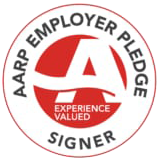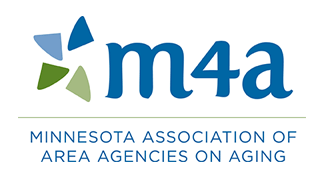How do I Pay For Services
When purchasing services, a combination of the following funding sources may be used.
If you are interested in learning more, call the Senior LinkAge Line®: Link to a Local Aging Expert at 1-800-333-2433. They will provide you with additional and more specific information about services and the agencies and organizations that provide them. You can also access information at the MinnesotaHelp.info® website.
Consumer Cost-Sharing
Contributions a consumer makes toward the cost of services. This may be in the form of a sliding fee scale, donation or a set fee.
Consumer-Directed Community Supports
This program gives older adults and their family caregivers greater control, flexibility, independence and responsibility over the services they receive which enable them to continue living at home.
County Human Services
County human services is the access point for many county, state and federal programs such as SNAP, Medicare Savings Programs, Medicaid, waivered programs, vulnerable adult reporting and adult foster care. Many of these programs have income and asset limits that must be met in order to qualify.
Group Residential Housing
Funding available to supplement basic room and board costs for Homes Plus/adult foster care or board and lodging facilities based on income eligibility.
Long-Term Care Insurance
Provides benefits for prescribed long-term care, which can include nursing home, assisted living and/or home health care services. Most policies have a variety of features and do not restrict coverage to nursing homes. Consumers should look for a policy that is tailored to their needs and individual situations.
Long-Term Care Partnership
The Minnesota Long-Term Care Partnership is a public/private arrangement between long-term care insurers and Minnesota’s Medical Assistance program. It enables Minnesota residents who purchase certain long-term care insurance policies to have more of their assets protected if they later need the state to help pay for their long-term care. Learn more at https://mn.gov/dhs/long-term-care-partnership/
Medical Assistance (MA)/Medicaid
Medical Assistance (MA) is Minnesota’s Medicaid program. It is a federal program that helps low-income individuals pay for medical, in-home, hospital and/or nursing home costs. Individuals must meet income and asset limits to qualify.
Medicare
A federal health insurance program for persons age 65 and over and some people with disabilities. Part A is hospital insurance, Part B is medical insurance (doctor and clinic visits) and Part D is prescription drug insurance. The premiums for Medicare are typically deducted from Social Security payments. Deductibles and co-payments are the enrollee’s responsibility. There are Medicare Savings Programs for those who meet certain income and asset limitations. Medicare Advantage Plans are also available in many areas of the country.
Medicare Savings Programs
The Qualified Medicare Beneficiary (QMB) program assists people at or below the poverty level to pay the cost of Medicare premiums, deductibles and coinsurance. The Service Limited Medicare Beneficiary (SLMB) program assists persons whose incomes are slightly higher than the poverty level to pay the cost of their Medicare Part B premium. The Qualified Individual (QI) program provides the same benefits as SLMB; however, the income standards are higher. Individuals must meet income and asset limits to qualify for these programs.
Medicare Supplemental Insurance
Insurance available to people who are enrolled in Medicare. Supplemental policies are individually purchased from insurance companies on the open market as Basic, Extended Basic or SELECT plans or plans provided by employers for retirees sold through groups. Policies cover most or all of the co-payment and deductibles associated with Medicare. Some companies are now offering alpha policy options, which have varying degrees of coverage (F, K, L, M and N in Minnesota).
Medicare Advantage Plans
Medicare Advantage Plans are health plan options that are part of the Medicare Program. If you join one of these plans, you generally get all of your Medicare-covered health care through that plan, which can also include prescription drug coverage. These plans may include extra benefits and have lower co-payments than in Original Medicare. However, you may have to see doctors that belong to the plan or go to certain hospitals to receive services.
Medicare Cost Plans
Medicare Cost Plans are a type of Medicare health plan available in some areas. These plans may work in much the same way, and have some of the same rules, as Medicare Advantage Plans. In a Medicare Cost Plan, if you go to a non-network provider, the services are covered under Original Medicare. You would pay the Medicare Part A and Part B coinsurance and deductibles.
Private Pay
Individuals purchase services with their own funds.
Supplemental Security Income (SSI)
A supplemental income source for persons over the age of 65, blind or disabled. Individuals eligible for SSI may also qualify for other programs such as Food Stamps and Medical Assistance.
Waivered Services
The Alternative Care and Elderly Waiver Programs provide community services to persons who are at risk of nursing home placement and meet specific financial guidelines.





